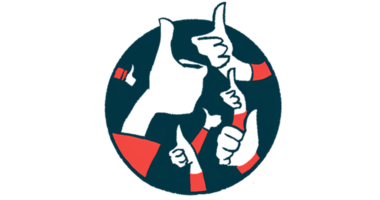Preventive Jivi found to safely reduce bleeds in hemophilia A
Individually tailored prophylaxis shows benefits in post-marketing study

Individually tailored prophylaxis, or preventive treatment, with Jivi (damoctocog alfa pegol) nearly halved the number of annual bleeding episodes in people with severe hemophilia A who had previously been on another replacement therapy, according to a Phase 4 post-marketing study.
Researchers also observed that none of the patients developed serious treatment-related side effects or inhibitors — neutralizing antibodies against a therapy — after they switched to preventive treatment with Jivi.
Overall, the patients experienced a gradual reduction in bleeding episodes over time, even when Jivi was given at intervals of up to once a week. These new findings are in line with seven-year data from the earlier Phase 2/3 trial PROTECT VIII (NCT01580293) and its extension.
“These results, consistent with those of PROTECT VIII provide further evidence that prophylaxis offers benefit to a wide range of patients and that they can continue to improve the longer they receive it,” the researchers wrote.
The study, “Safety and efficacy of damoctocog alfa pegol prophylaxis in patients with severe haemophilia A: Results of an interventional, post-marketing study,” was published in the journal Haemophilia.
Study seeks to confirm safety, efficacy of approved hemophilia A therapy Jivi
People with hemophilia A lack factor VIII, also known as FVIII, a protein needed for the blood to clot. As a result, they can experience prolonged and excessive bleeding, occurring both spontaneously or after an injury or surgery.
Developed by Bayer, and approved in the U.S. since 2018, Jivi contains damoctocog alfa pegol, a lab-made version of FVIII that works in the same way as the body’s own clotting protein. It is a replacement therapy that can temporarily restore the levels and activity of FVIII and help the blood to clot.
In addition to the U.S., Jivi is approved in Canada and Japan, as well as in the European Union, to treat people with hemophilia A, ages 12 and older, who have received previous treatment.
The goal of this Phase 4 post-marketing study (NCT04085458), conducted at sites across Europe, was to gather more information on Jivi’s safety and tolerability — and how well it works in people with severe disease.
“Post-marketing studies are conducted to confirm the safety and efficacy of approved treatments in a broad population, with the aim of extending the data obtained in pre-marketing studies,” the researchers wrote.
The study included 30 people with severe hemophilia A, with a mean age of 43.3, who received at least one infusion of Jivi. At the study’s start, all but three patients — 27 or 90% — were assigned to receive Jivi at a dose of 45 IU/kg every five days. Those three (10% of the participants) received a dose of 40 IU/kg twice weekly.
After 8-10 weeks, or about two months, nine patients (30%) were assigned to receive twice-weekly prophylaxis, while 10 (33.3%) were assigned to receive Jivi every five days. A total of 11 patients (36.7%) received Jivi at a dose of 60 IU/kg every seven days. By the end of the study, most participants (70%) received Jivi every five or seven days.
“The majority of patients (70%) had ≤1 [one or less than one] bleed during the first 8-10 weeks of prophylaxis and thus received extended-interval prophylaxis,” the researchers wrote.
Number of bleeding episodes nearly halved with individualized therapy
The annualized bleeding rate, a measure of the number of bleeding episodes adjusted to a one-year time window, dropped from a median of three before the study to 1.8 during the study.
More than half (53.6%) experienced zero bleeds in the last 24 weeks, or about six months, of treatment. Close to three-quarters — 20 patients or 71.4% — experienced zero joint bleeds during that same period of time. Among those who received once-weekly prophylaxis, 77.8% had zero joint bleeds in the last year of treatment.
Three patients reported mild or moderate treatment-related side effects, including redness at the injection site, a skin wound, hypersensitivity (allergic reaction), unusual taste sensation, cough, itching, and a rash. The skin wound and hypersensitivity led patients to stop receiving Jivi.
The individualized prophylaxis regimens as per approved label used in the present post-marketing study of [Jivi] were shown to be efficacious and well-tolerated.
None of the patients developed neutralizing antibodies against FVIII (inhibitors), which could stop Jivi from working properly. Three patients tested positive for low levels of antibodies against polyethylene glycol (PEG), a molecule that allows Jivi to stay longer in the body, but this had no clinical relevance.
“These transient antibody findings were of no clinical relevance, suggesting that periodic screening for anti-PEG antibodies in the absence of clinical suspicion is not necessary,” the researchers wrote.
“As observed in PROTECT VIII, the individualized prophylaxis regimens as per approved label used in the present post-marketing study of [Jivi] were shown to be efficacious and well-tolerated,” the team wrote.







